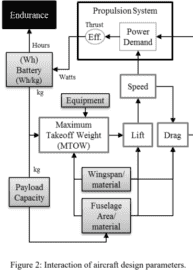Do You Know Your eVTOL’s PEX Factor?
You Better!

Dr. Raj Bridgelall, an associate professor of Transportation, Logistics & Finance at North Dakota State University’s College of Business, noticed a gap in the current planning, design, and evolution of the advanced air mobility (AAM) industry and asked himself: How can eVTOL companies best evaluate their aircraft’s design for optimal performance?
In pursuit of an answer to that question, Dr. Bridgelall developed what he calls a Performance Efficiency Index (PEX).
He first had to ask a few questions of his own:
- What is the minimum set of independent design parameters that can define a PEX?
- Does the PEX distribution in the existing design space follow any classic function such as the Gaussian (normal) or lognormal?
- Is there an association between eVTOL architecture types and the PEX in the present design space?
- Is there an association between aircraft weight and the PEX in the present design space?
- How well do the dependent parameters of the PEX explain the distribution of the PEX in the design space?
- How do the dependent parameters rank in their explanation of the PEX distribution in the design space?

Dr. Raj Bridgelall [image copyright and courtesy North Dakota State University]
- What prompted you to develop the PEX?
Aside from claims of having the best design, there were no objective methods for comparing designs along an efficiency scale based on publicly available information such as range, payload, weight, and dimensions. - What was the most surprising finding when you completed development of the PEX?
The data and statistical tests reveal no association between the PEX and the main eVTOL architecture types or aircraft weight. - How can eVTOL developers best make use of the PEX and when should they use it?
Developers can use the PEX as a planning tool to create new designs or optimize existing designs by studying and contrasting existing choices in the design space of currently available technology subsets and supply chains. Doing so can lead to the creation of more competitive and marketable aircraft, as well as gaining a competitive edge in securing funding and attracting customers.
Interaction of aircraft design parameters. [Image copyright and courtesy North Dakota State University]
- Is there a range of efficiency gains eVTOL developers might achieve using the PEX? What is it?
Developers already know that weight and energy density are key factors limiting efficiency gains for all-electric eVTOL designs. For example, a doubling of the battery energy density could lead to a doubling of range with everything else remaining unchanged. The PEX can help developers gauge the degree of advancement in performance from their previous architectural and design choices while keeping certain factors constant, for example, battery energy density. Aside from higher battery energy density, efficiency gains can come from a variety of other advancements such as more efficient and lighter weight motors, lighter and stronger airframe materials, and lighter and more environmentally resilient wiring harnesses, sensors, and computational devices. The amount of efficiency gained will depend on the degree of combined advancements of the technology subsets. - Have any eVTOL developers contacted you for guidance using the PEX?
A preprint version of the paper was available for comment for more than a year. The paper had many reads. However, no developer contacted us. The reason could be that the PEX is simple and straightforward to use, and that the paper was clear and easy to understand. - What’s next in your research queue?
We plan to update the dataset with performance specifications based on commercially deployed services to compare the PEX distribution with the current distribution. We are also working on new methods to forecast adoption for both cargo and passenger eVTOLs.
Subscribe to AeroCar Journal today, (it’s free for a limited time). Follow us on Facebook, Twitter, and LinkedIn. Visit the Vertical Flight Society for the most comprehensive directory of eVTOL aircraft directory


